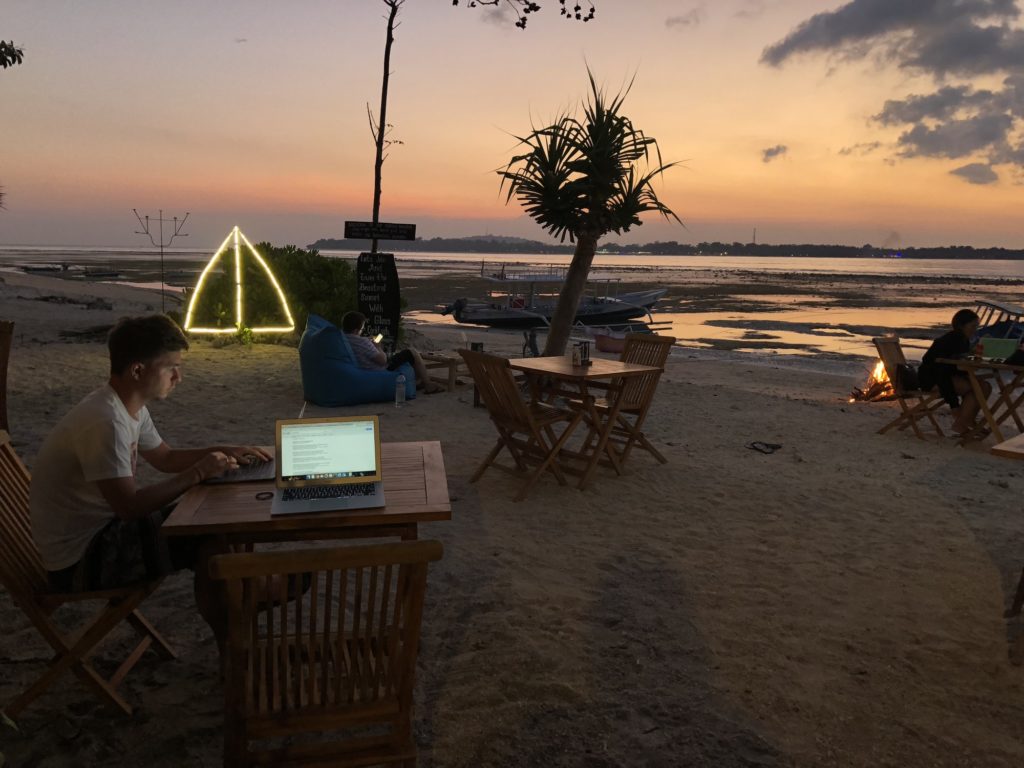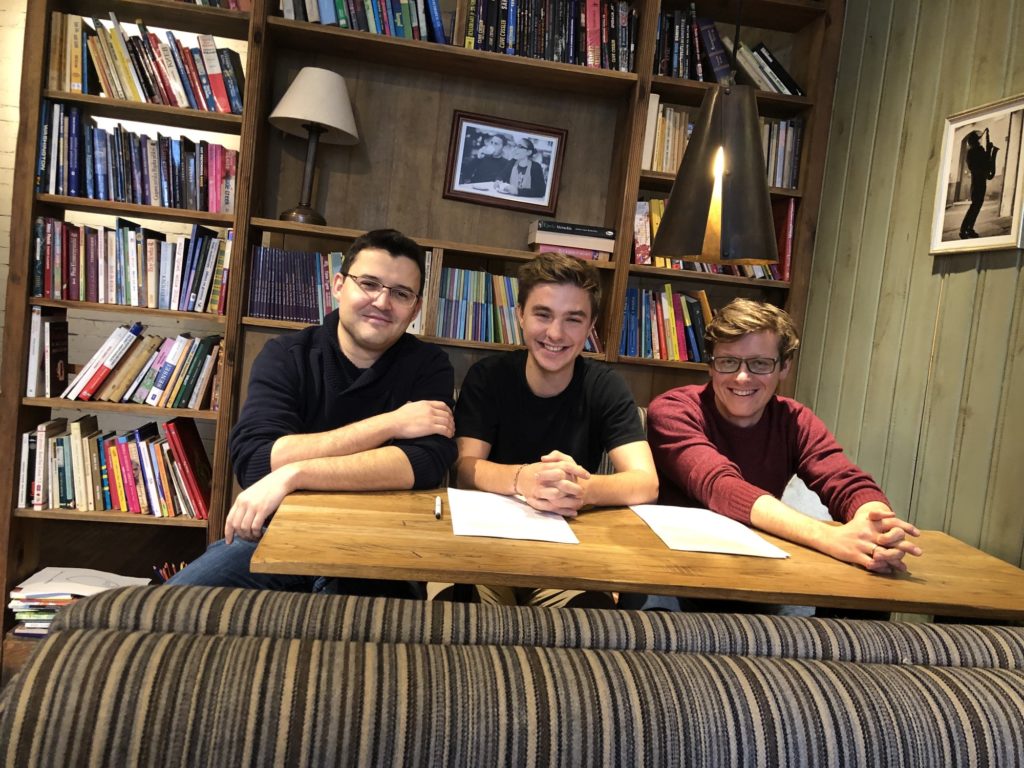If you dream about a world where everyone has the choice as to where and when they work, then keep on reading. This is a story about how the Remote-how team has gone on a mission to push remote work into the mainstream. In the last 11 months, they’ve established a fully-distributed company, raised $400,000 and partnered up with giants like PWC or Buffer, all while living and working remotely from across 11 countries.
Imagine a world where employees can work from anywhere they happen to be. A world where employers understand how to manage distributed teams and create a remote friendly company culture with high employee engagement and satisfaction. All of these give great access to a global pool of talent, where it’s common practice to hire people for full-time remote jobs. This change is coming and according to Upwork’s Future Workforce Report:
“ 38% of full-time staff will be working remotely in the next decade”
Although telecommuting was already introduced in the 70’s by NASA, it never really went fully mainstream (if we talk about full-time remote jobs). Now however remote is on the rise (50% of US workforce will be remote by 2020) and freelancing is growing rapidly. There are a couple of setbacks though. First of all, it’s not suitable for everyone. Many companies also prefer to work with permanent employees rather than freelance. All of this has lead us to the current market state where we have a humongous talent gap, with companies looking for solutions now!
It’s hard for me to count how many times I’ve heard my friends say, “If only I could work remotely like you and decide by myself where and when I work… I’d be able to make change happen in a flash!” To this, I always reply, “Thank you! You are one of the reasons why Remote-how has decided to help transform the jobs market into a ready state for the 4th Industrial Revolution, where efficient work can be done from anywhere.” How are we actually going to make this happen? Remotely, of course 🙂
- June-July: Based on the feedback from our summit participants we were told to help create global standards in remote work, allowing both individuals and companies to embrace remote work in a digital environment. Result – Remote-how Academy.
- August: We hired our first two full-time employees (Magda and Marek) and acquired two new clients for our remote work & travel program in Lisbon.
- September: We successfully conducted an experimental, 2-week remote work project in Lisbon for PWC, Netguru, and Ceneo (see video above) and started fundraising.
- October: I spoke at the NomadCity conference in Gran Canaria as well as exhibiting there. We got to the semi-finals in the startup competition at UNLEASH in Amsterdam.
- November: At Web Summit in Lisbon we did a soft launch of the first phase of our Academy called “Certified Remote Individual” together with 25 experts from companies like Buffer, GitLab or Mural.
- December: Finally, weincorporated the company in the US and closed our seed round at $400,000, led by Kogito Ventures with the participation of business angels from both Europe and the US (including executives from Google and SAP). We are now the team of 10 Remote Work Advocates and looking to double the size within the next 6 months.

Let me take you to the very beginning of the story in early 2017, when my wife and I moved from Poland to Austin, Texas. Even though exploring new cultures had always been our passion and we’d already traveled to at least 44 different countries (despite Ola being afraid of flying), life in the US really broadened our horizons. It truly opened our eyes to the remote work revolution going on there. We had countless discussions with our new friends and co-workers about how important flexibility was for them, something now being discussed in a number of studies.
“Ernst & Young found that “flexibility beat out just about all other job perks”.
On the other hand employers (including myself at that time) struggled with finding talent but seemed to not connect the dots that remote work could actually be a game changer. Therefore we decided to dig a bit deeper and find an answer to this puzzling question: How can we help the world seamlessly transform into a more remote work friendly place?
The answer came to us after conducting deep market research in over 40 long conversations with C-levels and HR decision makers across the US and Europe. The main lesson we learned was that the market does understand that this is the future. The majority know that this will change forever how their companies operate but… they are just not ready yet. We came across the first stage – mindset problem where employers envision a scenario in which they can’t control employees in the office (#trustissue). We also saw those who had already accepted that change was inevitable but had no clue where to start and how to make remote work, work.
Our project which aimed to combat these issues was born only months after our initial discovery. Remote-how Academy created the first global education and certification program in remote work, all curated by and in combination with top global experts.
Before we knew what our product market fit was, we had realized around January 2018 that we could begin to start living the lifestyle we had always wanted and make a significant impact globally on the growth of the distributed workforce. Now it’s December 2018 and when I look back, so many things have happened in the last months that I would never even have dreamed of.
- January-February: We started to pitch our first product “remote work & travel programs” for corporations. We managed to acquire our first customer PwC for an initial experimental project in Lisbon.
- March-April: Based on the feedback we got from the market that there is a lack of elementary know-how about remote work, we decided to organize the Remote Future Summit. This turned out to be the biggest virtual conference on remote work ever.
- May: We assembled an amazing team of 15 people who worked long into the night (most of them had a full-time job at that time), all driven by this crazy idea that everyone should work when and how they want.
- June: 64 top-notch speakers created 20+ hours of video content (keynotes, panel discussions, and workshops) that brought together 5,017 participants from 105 different countries. They all joined virtually to listen how companies like Asana, The NYT, Doist or GitHub make remote work, work

- June-July: Based on the feedback from our summit participants we were told to help create global standards in remote work, allowing both individuals and companies to embrace remote work in a digital environment. Result – Remote-how Academy.
- August: We hired our first two full-time employees (Magda and Marek) and acquired two new clients for our remote work & travel program in Lisbon.
- September: We successfully conducted an experimental, 2-week remote work project in Lisbon for PWC, Netguru, and Ceneo (see video above) and started fundraising.
- October: I spoke at the NomadCity conference in Gran Canaria as well as exhibiting there. We got to the semi-finals in the startup competition at UNLEASH in Amsterdam.
- November: At Web Summit in Lisbon we did a soft launch of the first phase of our Academy called “Certified Remote Individual” together with 25 experts from companies like Buffer, GitLab or Mural.
- December: Finally, weincorporated the company in the US and closed our seed round at $400,000, led by Kogito Ventures with the participation of business angels from both Europe and the US (including executives from Google and SAP). We are now the team of 10 Remote Work Advocates and looking to double the size within the next 6 months

This is just the beginning – both of Remote-how as well the remote work revolution. Our seed round funds will be used to help scale the business in the U.S market, but as remote work has no borders we will also do our best to help individuals and companies from around the globe. In the next 12 months, we plan to focus on the post-Academy experience of its users, enabling them to not just learn how to work in the distributed environment but also find relevant employers hiring remotely.
If you have any questions about Remote-how and would like to learn more about the benefits of remote work or flexible job arrangements – don’t hesitate to contact me.
See you soon, remotely 🙂
***
Article written by Iwo Szapar, co-founder & CEO of Remote-how

